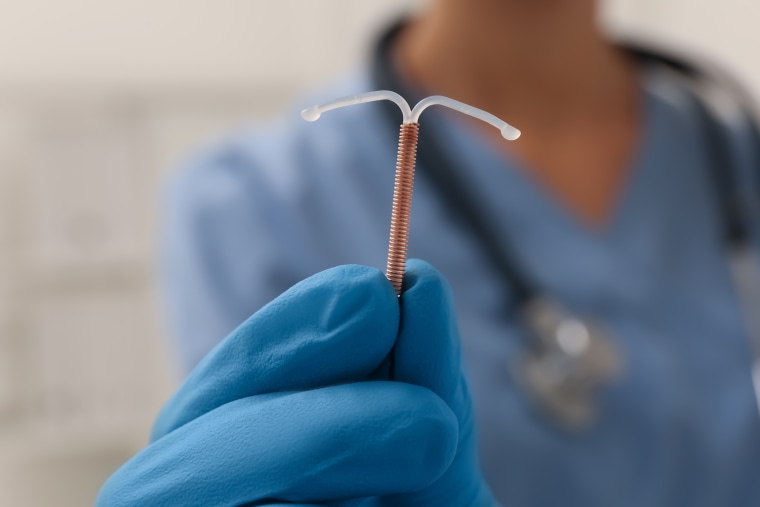Viral TikToks about intrauterine devices (IUDs) tend to portray negative experiences more often than positive ones, recent research found, and often focus on physical pain and mistrust of doctors.
Some videos even include misinformation about the birth control method, according to the research letter, which was published in the journal Obstetrics & Gynecology earlier this month.
Researchers from Duke University used a web-scraping application to download and compile the top 100 most viewed videos tagged #IUD on TikTok. They found that nearly 38% had a negative tone compared to just 19% with a positive tone. Just under 28% mentioned distrust of health care professionals, while around 24% contained “moderately or highly inaccurate scientific claims,” according to the researchers.
The videos typically discussed IUD insertion and removal, and patients in the videos sometimes said they weren’t offered enough pain relief or experienced negative side effects.
“Inevitably a lot of negative videos tend to garner more attention on these applications, and so I think there is a lot of negativity towards birth control on TikTok,” said Jenny Wu, a resident obstetrician-gynecologist at Duke who helped conduct the research. “That’s not to say that it is not a real lived experience because IUDs are quite painful. It is definitely an uphill battle when I feel like the algorithm does not work in favor of positive videos towards this.”
IUDs are over 99% effective in preventing pregnancy. The small, T-shaped device — whether the hormonal or copper version — is inserted through the opening of the cervix, into the uterus. Depending on the type, an IUD can last between three and 12 years. During insertion, patients may experience discomfort, which can be severe in some cases.
The goal of the study, Wu said, was to help "health care professionals to really know what is out there online," so they can determine whether to adjust the ways they communicate with patients about IUD procedures and pain management options.
Inevitably a lot of negative videos tend to garner more attention on these applications, and so I think there is a lot of negativity towards birth control on TikTok.
-Jenny Wu, study co-author
TikTok can be a resource for sharing information about reproductive health care, but it’s also brimming with videos about users’ personal experiences with different types of birth control — many of which are negative. Although IUDs are effective, fears about pain during insertion are prevalent — a Cochrane study described it as a "barrier" to adoption of the devices.
In one viral video posted earlier this year, for example, a TikTok user filmed her reaction during her IUD insertion and described the procedure as the “worst pain imaginable.” Another TikTok demonstrating the tool that doctors use to stabilize a patient's cervix went viral this year, after which many TikTok users said they weren't fully informed about how the insertion procedure worked before getting IUDs. One user who responded to the video questioned why she wasn't offered more pain management options.
“It really does make me feel a certain type of way that there are so many women that are learning about the procedure that they’ve already had through this app, and not through the doctors that gave them the IUD,” the user said in the response video.
Wu, a TikTok user herself, said she sees how videos about negative IUD experiences can make patients wary.
"Watching someone get an IUD and being in a lot of pain, that is an emotional experience that you feel for someone else," Wu said of the negative videos that tend to go viral on the platform. "That is different from me, as a physician, telling you that it is a good form of birth control."
Pain thresholds vary from patient to patient, but in general IUD procedures can cause more discomfort for people who haven’t given birth vaginally. Clinicians usually instruct patients to take ibuprofen or other over-the-counter anti-inflammatory medication in advance.
Some medical practitioners with TikTok followings have posted videos discussing the possibility of administering local anesthetic or sedating patients for IUD insertions. And some patients request prescription anxiety medications like Valium or Ativan, according to Cosmopolitan. But the scientific research on these interventions is inconclusive, and they come with their own risks and costs.
Wu said she perceives a "communication gap between health care providers and patients on this topic," which can contribute to distrust in the health care system.
She added that although the videos analyzed in the study may portray IUDs negatively, the fact that people are talking about their experiences so openly may prompt more patients to advocate for themselves in positive ways.
"From my own experience as a resident physician, I do have patients talking to me more about pain," Wu said. "I think that all of us [doctors] want to hear what patients are worried about before they come in, because that's a way that we can help mitigate their fears or anxieties, and hopefully mitigate their pain."
Her team's research also demonstrates that "there is a space for health care professionals, or health care professionals working with influencers that people trust and love" to talk about birth control options, Wu said. Since Gen Z patients may be more inclined to search TikTok before Google, it can be a platform for combating medical misinformation — if health care providers learn how to engage with users.
"I think TikTok can be a wealth of information in the right way," Wu said.
